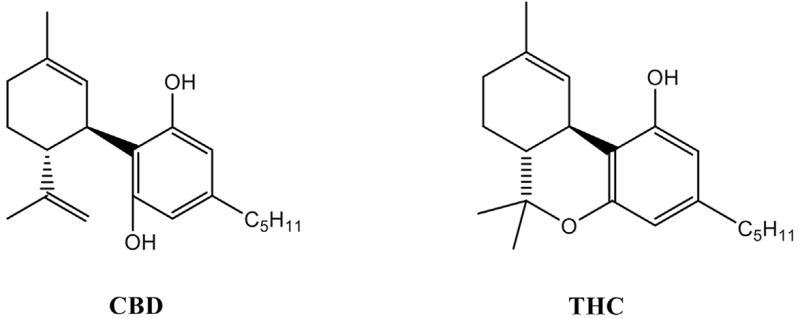
TRIGGER WARNING: This article contains words and images related to substance abuse that can be potentially triggering.
In a report by the National Center for Drug Abuse Statistics, around 165 million or 60.2% of Americans aged 12 years or older have abused substances such as drugs, tobacco, alcohol in the last 30 days. This trend has grown in the past year due to the current pandemic, with 13% of Americans reporting having started or increased their substance use as a way of coping with COVID-19-related stress.
Among all recreational substances, marijuana is one of the most abused in the world. In today’s article, we will give you information on the 8 long-term effects of marijuana, its withdrawal symptoms, and available treatments.
What Is Marijuana?
Before we proceed with the long-term effects of marijuana, let’s first take a look at its origin, uses, and chemical composition.
Origin
Marijuana comes from the dried flowers of Cannabis Sativa L., a flowering herbaceous plant belonging to the hemp family. Cannabis is indigenous to Asia but is now distributed and cultivated all over the world. This plant has a long-recorded history as a source of fiber, oil, food, and medicine. It is also used as an entheogen, a chemical substance used in religious or spiritual practice.
For recreational use, marijuana comes as a greenish gray-brown mixture of dried buds, leaves, and stems and is often smoked. For medical purposes, it is often mixed in food. It may also come as brewed tea or in the form of varying resin-like products containing high doses called hash oil, waxy budder, and shatter.

Chemical Composition

There are around 500 chemical compounds found in marijuana, and the one responsible for the ‘high’ is delta-9-tetrahydrocannabinol or THC. THC is a psychoactive compound, meaning, it has mind-altering properties. Its structure is similar to that of the brain chemical anandamide, which enables it to be recognized by the body and modify normal brain communication.
The other chemicals in marijuana used are called cannabidiol or CBD, and these are the substances derived from marijuana that are often associated with medical and therapeutic use. As opposed to the psychoactive effects of THC, CBD does not cause a high. However, CBD’s medical benefits remain to be a subject of study.
Usage
Marijuana is commonly smoked in joints or blunts (hand-rolled in paper similar to cigarettes), pipes, and water pipes (bongs). Smoking marijuana or THC oil in vapes is also an increasingly popular way of using it. As mentioned, it can also be consumed like brewed tea and mixed into food or edibles which can be in the form of brownies, cookies, or candies.
Another way of using it is through ‘dabbing’. THC oil is evaporated into a viscous resin-like form and hardens into a brittle glass-like form called shatter. Fragments of shatter are heated, and the vapor and smoke are then inhaled through a special tool called dab rig or oil rig. This is the most concentrated form of marijuana, containing around 60% to 90% THC.
Marijuana has been the center of various debates especially recently, with changes in marijuana policies across states. Whether it is for legalization or decriminalization, these changes signal how it is gaining greater acceptance for medical and recreational use. However, it is important to note that its therapeutic benefits outweighing its health risks remain to be an open question that science and research have yet to resolve.
What Are The Short-Term Effects Of Marijuana?
The short-term effects of marijuana vary per person, but generally speaking, its short-term effects are centered on the high or the euphoric feeling of wellness and relaxation. Since marijuana contains a psychoactive substance, it causes:
- The pleasant and or happy feeling of euphoria
- Heightened sensory perception (brighter colors or louder sounds)
- Altered perception of time
Apart from the psychological effects, it also causes:
- High heart rate
- Sluggishness or slower reaction time
- Increased appetite
For some people, marijuana can have the opposite effect, especially in large doses. It can result in:
- Anxiety or panic
- Fear, distrust, or paranoia
- Acute psychosis (hallucinations and delusions)
- Dissociation or loss of sense of personal identity
The effects of marijuana can last up to three hours when smoked, and edibles may last for more. However, THC can still be detectable in the body weeks after use. How long marijuana stays in your system depends on the frequency and manner of consumption.
What Are The Long-Term Effects Of Marijuana?
Although considered to be a ‘natural’ or ‘healthier’ choice for recreational substances, marijuana, like all addictive substances, poses negative long-term effects on a person.
- Cognitive Impairment: There is substantial evidence that prolonged use of marijuana negatively affects our brain. Research suggests that marijuana use causes functional impairments like poor impulse control, memory, and learning, especially in adolescents. Another set of studies observed that long-term use of marijuana decreases IQ.
- Cardiovascular, Respiratory, And Other Physical Ailments: One of marijuana’s immediate effects is an increase in heart rate, which can be a risk for heart attack especially for those with heart conditions. Marijuana, like tobacco, contains levels of volatile chemicals and tar that raise concerns about the risk for cancer and other lung diseases. Additionally, marijuana withdrawal effects cause general malaise, tremors, chills, and fever.
- Mental Illnesses: Various studies found the link between marijuana use and an increased risk of psychiatric disorders like psychosis (schizophrenia), depression, anxiety, and substance use disorders. Withdrawal from marijuana use can also cause mood disorders like irritability, anger, and aggressiveness. Marijuana withdrawal may even trigger an onset of depression.
- Substance Abuse And Dependence: Marijuana is considered a gateway drug, which means it is likely to precede the use of other substances that can lead to the development of an addiction to other substances. Although the majority of people who use marijuana do not jump to ‘harder’ substances like meth or heroin, there is evidence that those who have a history of marijuana use are likely to develop an addiction to other substances like alcohol and nicotine. It is important to note that there are a lot of factors that contribute to the development of addiction; the use of other substances is just one of them.
- Conflict With The Law: Despite policies on legalization and decriminalization, it was reported that around 1 million of the total drug arrests every year are related to marijuana. People with a marijuana addiction or other substance dependence are likely to be engaged in unlawful acts like theft to sustain their substance use. Lastly, marijuana use has a strong link to vehicle crashes including fatal ones, as it impairs judgment and slows reaction time.
- Socioeconomic Loss: Apart from the costs of drug treatments and prevention, people with substance use problems are likely to experience socioeconomic loss in various ways. Over time, addiction interferes with a person’s day-to-day activities, including maintaining responsibilities like work. Drug-related incarceration may also contribute to this.
- Social And Relational Issues: As previously discussed, addiction impairs a person’s daily functioning. This results in difficulty in maintaining familial relationships and other social connections. Apart from this, parents with addiction to marijuana or other substances are more likely to live in homes in which relatives, friends, and strangers also use drugs, exposing children to possible emotional and physical harm. Additionally, children that have to be removed from such environments are more likely to engage in crime, drug use, and delinquency
- Mortality: Globally, it is estimated that there are 211,000 drug-related deaths every year, with younger people facing particularly high risk. Compounding factors like; conflict with the law, health-related side-effects, and other comorbidities contribute to these drug-related deaths.

Apart from these long-term effects of marijuana, major health risks are also of concern when marijuana is used with other substances like tobacco or cocaine. All in all, addiction to marijuana or other substances negatively impacts a person’s life, families and communities, and even public safety.
Available Treatments for Marijuana Dependence
Marijuana use disorders are very similar to other substance use disorders. Often, marijuana addiction comes with comorbidity or a co-occurring mental illness. Although there are no approved medications to assist marijuana addiction, several studies have shown that treating marijuana addiction with standard treatments for psychiatric disorders proves to be effective. Some of these are cognitive-behavioral therapy, contingency management, and motivational enhancement therapy.

If you or a loved one is unsure about possible treatments for marijuana addiction, we at the Restore Treatment Center are here to help. We are one of the most invigorating adult recovery communities in Southern California. We offer a full continuum of care through specialized rehabilitation programs to help you obtain a new life of sobriety. We restore hope, we save lives. Recovery is possible.
Visit us at 6918 Owensmouth Ave, Canoga Park, CA 91303, or you can call us at 888-979-4570.












